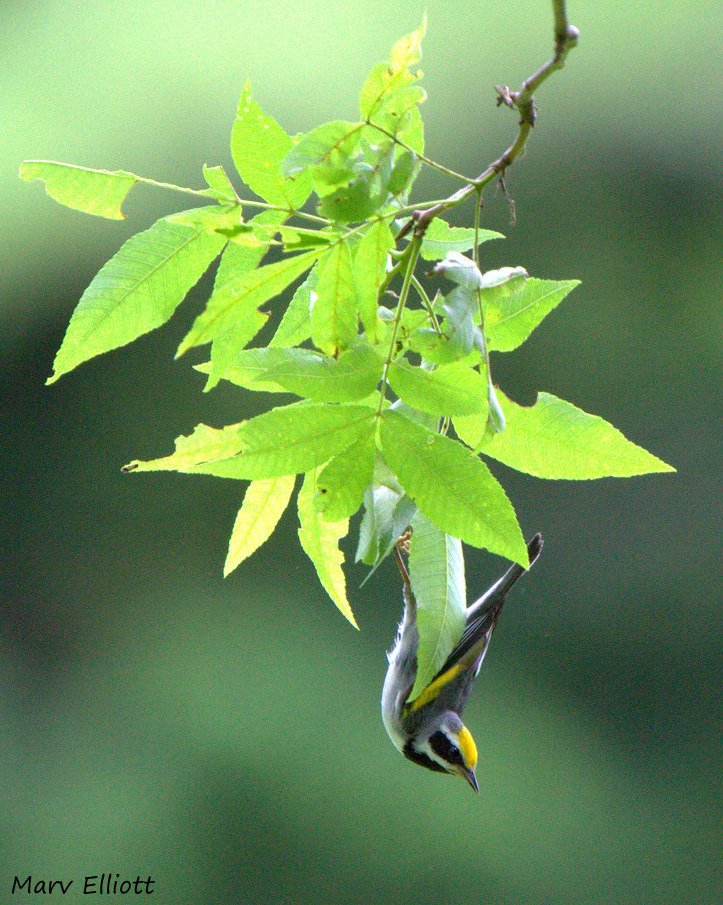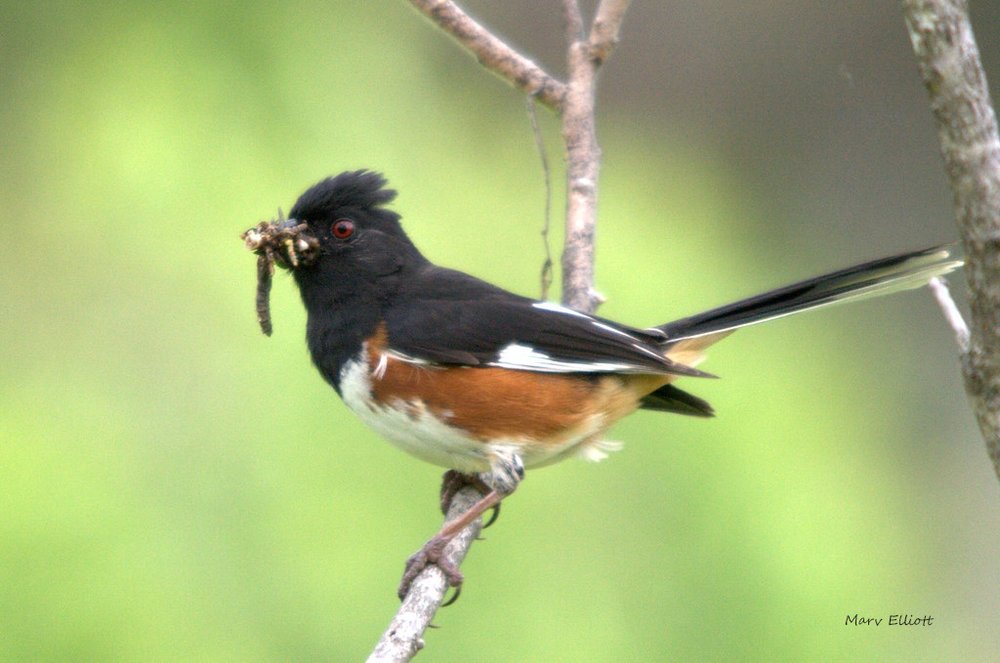 Golden-winged Warbler/photo by Mark LaBarrThe Golden-winged Warbler has been in the bird news a lot lately, but mostly for the wrong reason. Its numbers are declining at an alarming rate. Suitable habitat is getting harder for it to find. Also, it is being out-competed by its cousin, the Blue-winged Warbler, with which it hybridizes.
Golden-winged Warbler/photo by Mark LaBarrThe Golden-winged Warbler has been in the bird news a lot lately, but mostly for the wrong reason. Its numbers are declining at an alarming rate. Suitable habitat is getting harder for it to find. Also, it is being out-competed by its cousin, the Blue-winged Warbler, with which it hybridizes.
Golden-winged Warblers are pretty fussy about their habitat and for that reason occur only in certain areas of Vermont. A quick look at eBird data for the past ten years shows them on the western side of the state, primarily in the Champlain Valley and down into Rutland County. Click here to see a map. Only a scattering of reports show them in the southeastern portion of the state. Some of the best habitat for Golden-winged Warbler as well as Blue-winged Warbler, Eastern Towhee, Brown Thrasher, Prairie Warbler, Field Sparrow and American Woodcock occur along power lines. The early successional shrubbery interspersed with open areas is exactly what these species need for successful nesting.
 Good citizen scientists always love a project! For the past three years Audubon Vermont has partnered with VELCO (the Vermont Electric Power Company) to determine the population and location of Golden-winged Warblers and the other above named species along VELCO’s power lines in the Champlain Valley. Rutland County Audubon members and other volunteers from Otter Creek Audubon and Green Mountain Audubon took to the power lines enthusiastically (what true birder can resist birding with a purpose?).
Good citizen scientists always love a project! For the past three years Audubon Vermont has partnered with VELCO (the Vermont Electric Power Company) to determine the population and location of Golden-winged Warblers and the other above named species along VELCO’s power lines in the Champlain Valley. Rutland County Audubon members and other volunteers from Otter Creek Audubon and Green Mountain Audubon took to the power lines enthusiastically (what true birder can resist birding with a purpose?).
The work was not without its challenges – ticks, hot weather, cold weather, steep hills, thorns, barbed wire, cows, and, on one occasion, yaks. Sites from West Rutland north to Williston were surveyed. The other above-named species were counted as well along with Brown-headed Cowbirds.
Some good news has come out of the project. Forty locations were surveyed and 60 Golden-winged Warblers were located, a higher number than expected. Seventy-three Blue-winged Warblers were tallied. Observations of these two species were confirmed by sight as the songs and calls produced by hybrids can sound like Golden-winged, Blue-winged or a combination of the two. Fifty-three hybrids were also counted (check your field guide to see just how confusing this can be!) along with 38 ‘winged’ warblers that were heard only.
Hopefully the power line surveys will continue in 2015. If you are interested in participating, contact us at birding@rutlandcountyaudubon.org. And if you are out birding and see any of these species this spring, please submit your sightings to eBird.
Thanks to Margaret Fowle of Audubon Vermont for much of the above information.